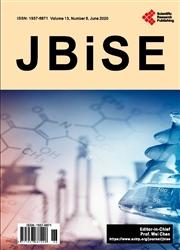Investigation of Hammering Sound Frequency to Prevent Intraoperative Fracture during Total Hip Arthroplasty
引用次数: 1
Abstract
Background: The 1st peak frequency of the hammering sound in total hip arthroplasty may serve as an evaluation index to prevent intraoperative fracture. Fixation of the stem and femur cannot be acquired unless the 1st peak frequency of hammering the stem into the femur stabilizes, and fixation can be judged as acquired when the 1st peak frequency becomes constant. To investigate whether the environmental sound in the operating room can be differentiated from the hammering sound of total hip arthroplasty, the 1st peak frequency of the hammering sound when impacting the stem into the femur with a hammer was identified. Method: The hammering sound of impacting the stem into a biomechanical test material through an impactor was analyzed using a fast Fourier transform analyzer. Environmental sound in the operating room was simulated and the 1st peak frequency of the sound on collision between the operator’s voice and the surgical instrument was measured. The 1st peak frequency of hammering sound was compared between patients indicated for total hip arthroplasty and healthy individuals to investigate whether there is a difference due to bone quality. Results: The natural frequency of the impactor was 3.41 ± 0.05 kHz, and the 1st peak frequency of the femur, stem, and impactor was 2.43 ± 1.45 kHz. The 1st peak frequency of hammering sound on simulated femur in patients indicated for total hip arthroplasty was 2.98 ± 0.73 kHz and that in healthy individuals was 2.15 ± 0.32 kHz. This sug-gested that the hammering sound in total hip arthroplasty-indicated patients overlaps with the frequency of the collision sound of surgical instruments. Conclusion: To develop a sys-Open锤击声频率预防全髋关节置换术中骨折的研究
背景:全髋关节置换术中锤击声第1峰频率可作为预防术中骨折的评价指标。柄与股骨的固定只有在打入股骨的第一个峰值频率稳定后才能获得,当第一个峰值频率保持不变时即可判断为获得固定。为探讨手术室内环境声能否与全髋关节置换术的锤击声区分,我们确定了用锤击杆撞击股骨时的锤击声的第1个峰值频率。方法:采用快速傅立叶变换分析仪对冲击器冲击杆撞击生物力学试验材料时产生的锤击声进行分析。模拟手术室环境声,测量手术者声音与手术器械碰撞时的第一峰频率。比较全髋关节置换术患者与健康人群的锤击声第一峰频率,探讨是否因骨质量不同而存在差异。结果:冲击器的固有频率为3.41±0.05 kHz,股骨、椎体和冲击器的第一峰值频率为2.43±1.45 kHz。全髋关节置换术患者模拟股骨锤击声第1峰频率为2.98±0.73 kHz,健康人为2.15±0.32 kHz。这提示全髋关节置换术患者的锤击声与手术器械碰撞声的频率有重叠。结论:开发一种系统开放
本文章由计算机程序翻译,如有差异,请以英文原文为准。
求助全文
约1分钟内获得全文
求助全文

 求助内容:
求助内容: 应助结果提醒方式:
应助结果提醒方式:


